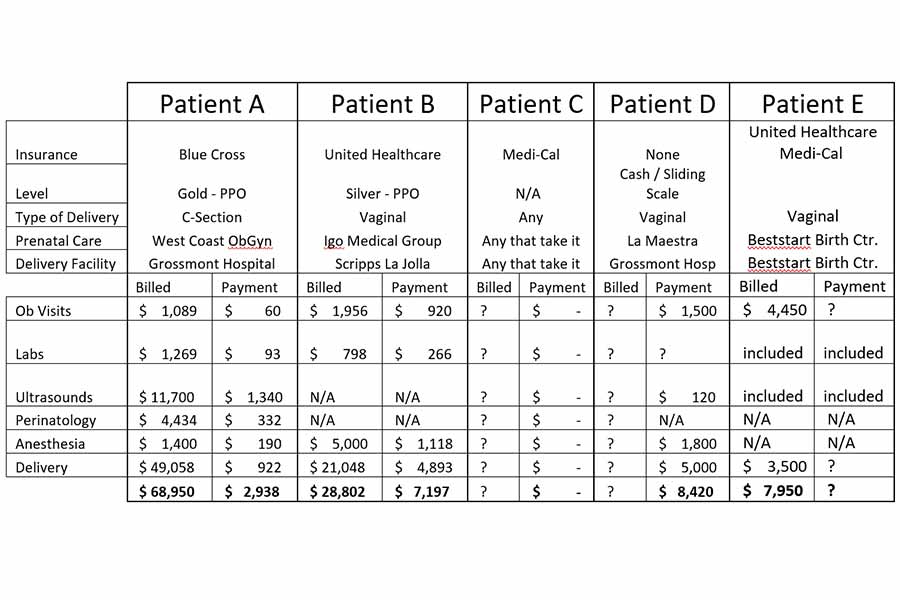The Cost of Having a Baby
Share this Article:
Finding out you are pregnant can be overwhelming. Pregnancy is a life changing, wonderful, and sometimes terrifying possibility. Everyone responds to pregnancy differently, especially if it is unplanned. Regardless of being fearful or energized by the prospect of change, one question is at the forefront, “How much will it cost to have a baby?”
There is no easy answer for this question because there are many variables and options. The healthcare services related to a pregnancy are summed up in two parts – “Prenatal Care” and “Labor & Delivery”. Prenatal care is the medical services during the 9 months of pregnancy. Labor & Delivery is the actual birth of your baby. Of the two, Labor and Delivery in a hospital setting is the most expensive. Pregnancy Care Clinic has free services to help you begin this journey, including referrals to prenatal care. Beginning prenatal care right away is important for you and your baby. Delaying prenatal care does not save as much money as you might expect, and it could mean serious complications later in pregnancy.
The services that cost money in prenatal care include :
- Regular visits with an ObGyn
- Labs – testing for everything from Sexually Transmitted Infections (STI), blood sugar, hormones, DNA testing, and a myriad of other checks for markers of potential concerns during pregnancy.
- Ultrasound – Soundwaves used to produce a picture of the baby growing inside are used to determine progress of development, check for birth defects and to discover the gender.
- Perinatology – Special attention to monitor, correct, or reduce risks should a complication arise during prenatal care.
The services that cost money in Labor & Delivery depend on your birth plan . The first choice affecting the cost of having a baby is between a hospital birth using an ObGyn, or a birthing center or home birth using midwives. Hospital births can be done vaginally or Cesarean section (c-section). Hospital births cost significantly more than birthing centers or home births, but cost should not be the sole basis for choosing. The major differences in these two choices are location, pain management, and philosophy of care.
Location
A hospital has two options; the labor room, where an ObGyn and nurse will help through a vaginal birth, or an operating room for a c-section. Birthing centers offer their own facility for labor and delivery. Midwives offer home births or even destination births. Water births may also be available.
Pain Management and Medicine
Hospitals offer the entire spectrum of medication and pain management. An ObGyn can quicken or slow the progress of delivery using various drugs. Medication to reduce labor pains during a vaginal birth can be administered in a hospital; this is called an epidural. Lastly, anesthesia may be used to surgically deliver a baby in a c-section. Conversely, birthing centers and midwives are limited in their pain management to massage, acupressure, aromatherapy and nitrous oxide.
Philosophy
Midwives and hospitals approach giving birth from very different perspectives. Birthing centers and midwives emphasize a woman’s body is skillfully designed to grow and deliver babies, so a more holistic approach is used in assisting the natural process. Hospitals, on the other hand, consider pregnancy a condition to be treated. Each approach, or philosophy, results in quality care. Midwives delivering babies in the home or specific locations have been around since the beginning of life. In 18 th Century England, the death rate of women in childbirth was .5% [1]. Due to advances in the medical field, childbirth has become much safer today. Should a complication arise, birthing centers and midwives will transfer a laboring woman to the hospital. If complications are discovered in prenatal care, a birthing center or midwife may not be an option in order to protect the life of mother and baby.
Healthcare Plans
The question about healthcare coverage is an important one to ask. A woman may already have a healthcare plan or be on a prenatal care plan. Looking for insurance should begin by inquiring which providers will accept the plan in question. Pregnancy is a nine-month process, so if the coverage or available providers are not adequate, there is time to make a change. Open enrollment begins in October and coverage begins January 1 st unless the person has a “qualifying event” like marriage, a new job, or moving to another state. A person looking to change or add a plan can visit Covered California and may qualify for a Medi-Cal subsidized plan with an annual income between $18,000 and $75,000. However, making a change to healthcare coverage is not always possible and some people may not have any coverage. But this should not be a cause for delaying prenatal care. If a person does not have healthcare coverage, they can begin care with presumptive eligibility (PE) for Medi-Cal. The prenatal care provider will assist with all the applications for PE. If a pregnant woman cannot obtain healthcare coverage and doesn’t qualify for Medi-Cal, there are programs available to cover prenatal care on a cash basis with a sliding scale.
Every pregnancy is different and with all the variables and options, pinning a price tag on pregnancy is difficult. Below, we have looked at some examples and scenarios that provide a good idea of the cost. However, these scenarios are not a guarantee. Complications during pregnancy are an unknowable variable. Please look at this chart and then read the corresponding pregnancy story below.
 Patient A
Patient A
This patient began care at Pregnancy Care Clinic and had a Gold PPO plan from Blue Cross. This pregnancy was her second child. She began prenatal care in her 9 th week. Her first pregnancy required an emergency c-section. She was concerned about trying to deliver the second child vaginally. After discussing the situation with her ObGyn, she opted for a hospital birth c-section. As the pregnancy progressed, a complication was found, and she needed perinatology care with specialist visits, ultrasounds and labs. The pregnancy progressed, and she delivered a full-term pregnancy at Grossmont Hospital. Blue Cross negotiated all the “billed prices” down by 44%, paid 52% of the “billed prices” and Patient A was responsible for approximately $3,000.
Patient B
The patient began prenatal care in the 28th week of her pregnancy. She had a silver PPO plan from United Healthcare. Patient B found herself in an unplanned pregnancy and after much thought and prayer decided that placing her baby was the best option for her and her daughter. She contacted Adoption Center of San Diego and began the process of choosing an adoptive family. Due to the fact that she became aware of her pregnancy after she was almost to her third trimester, she did not have the normal lab work done that is typically done up to the end of the second trimester. When she went for a checkup in her 36th week, she had high blood pressure. Her ObGyn decided that she be induced into early labor, doing what was best for her and her baby. She delivered her baby vaginally at Scripps La Jolla. She required additional care post labor and her doctor insisted that she stay an extra day for observation. The adoptive parents were by her side throughout her labor and delivery as per Patient B’s birth plan and wishes. Patient B has regular updates and visits with her baby and feels that she has gained a family rather than lost her child. In adoptions, the adoptive parents pay for out of pocket medical costs for the birth mother, so the cost to her was $0.
Patient C
Many of our patients share this example of beginning their care at Pregnancy Care Clinic. They do not have any insurance. When they begin prenatal care with an ObGyn, they are enrolled with presumptive eligibility (PE) Medi-Cal. PE provides coverage until their Medi-Cal application is approved or denied. Medi-Cal will cover 100% of a qualifying woman’s prenatal care and delivery regardless of the birth plan. The out of pocket expense for this patient was $0.
Patient D
As with all things, there are circumstances where a pregnant woman does not have a health plan and cannot qualify for Medi-Cal. However, the healthcare system in San Diego has several cash-pay and sliding scale offers available. It should be noted that these programs are, in some ways, subsidized by the government, and others utilize funds from charitable organizations and foundations. Nothing is free, someone is paying the difference in the billed price and the discounted amount. Patient D is a hypothetical example of a pregnant woman that begins her care at Pregnancy Care Clinic utilizing all our free services. She then signs an Ob agreement with La Maestra that covers her prenatal care visits. It does not cover labs or ultrasound. There will be lab costs, but this is left blank in the table because it depends on what the ObGyn determines as necessary. Ultrasounds cost between $80 – $150. This patient received one free ultrasound from Pregnancy Care Clinic. If the ObGyn only needs the 2 nd Trimester scan, they offer that for $120. Assuming there are no complications, everything progresses within the “coverage” of the Ob agreement. This agreement does not cover delivery. Patient D signs up for an “Ob Package” at Grossmont hospital labor and delivery admitting office. This package MUST be fully paid for before she will be admitted for delivery. This is preferable to simply showing up at the Emergency Room. ER visit costs will not be on a sliding scale and if left unpaid will be turned over to collections. Patient D is on a budget, so she considers the following options from Grossmont Hospital:
-
- Vaginal delivery – $4,900, with anesthesia (epidural) an additional $1,800
- C-section delivery – $6,200, with anesthesia an additional $1,500. An extra day for c-section recovery is an additional $1,250
Patient D chooses a vaginal delivery with an epidural for the pain. She knows she must have it paid in full before she delivers, so she begins payments plan as early as possible.
Patient E
After starting her care at Pregnancy Care Clinic, Patient E chose to have a waterbirth at Best Start Birth Center . The costs are all inclusive of prenatal care and delivery, provided there are no complications. Best Start accepts all forms of healthcare coverage including Medi-Cal. However, Medi-Cal only covers the prenatal portion of care. Patient E had United Healthcare Medi-Cal which covers 100% of the costs. She progressed though her prenatal care and had a water birth with her mother present. She had no complications and, after recovery, was able to return home the next day. The out of pocket expense for this patient was $0.
Pregnancy Care Clinic remains ready to help all our patients through the first steps of pregnancy. Make an appointment to begin your care today.
[1] I. Louden, Deaths in childbed from the eighteenth century to 1935, Med History 1986 Jan;30(1):1-41




